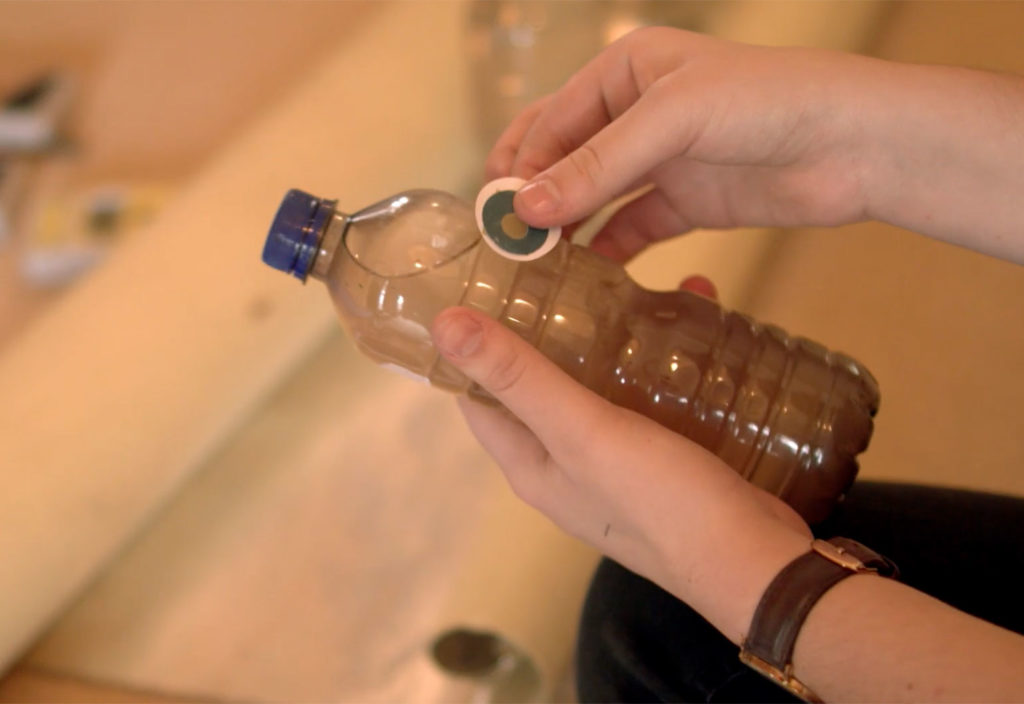An engineering student from regional NSW recently became the first Australian to win a prestigious international water award with an economical and simple invention that could help developing communities ensure their drinking water is safe.
Eighteen-year-old MacInley Butson, who is currently studying for an engineering degree at the University of Wollongong, took out this year’s US$15,000 Stockholm Junior Water Prize for an invention she originally came up with in Year 9. She also won US$5000 for her high school, Illawarra Grammar.
Butson’s invention is a film-based solar disinfection (SODIS) sticker that measures ultraviolet radiation to detect when water sanitised by sunlight is safe to drink.
According to the Stockholm Prize jury, Butson’s SODIS sticker is practical, ready and globally deployable.
“The project demonstrates experience and expertise by a dedicated and creative young scientist. This entry will stick in our minds for a long time,” they said in their citation.
Before winning the international prize, Butson won the Australian Stockholm Junior Water Prize twice – once in 2017 and again in 2019. Entries are open for the 2020 Australian prize until 16 December.
Correcting a flawed measure
According to the World Health Organisation (WHO), only 71 per cent of the world’s population (5.3 billion people) had access to safely managed drinking water in 2017. In contrast, at least 2 billion people had a water source that had been contaminated by faeces.
This has serious health consequences, with WHO estimating that 829,000 people die each year from diarrhoea as a result of unsafe drinking-water, sanitation and hand hygiene.
Solar disinfection is a simple water treatment method that can be accessed by communities without a power grid or treatment chemicals, and can also be used to sanitise water after a natural disaster. For example, clear plastic bottles can be filled with water and placed on a roof. This treatment is currently based on the number of hours of exposure; WHO recommends exposure to sunlight for six hours, or two days in cloudy conditions.
Butson told The Sydney Morning Herald she developed her SODIS sticker, which measures UV radiation levels rather than time, because temporal measurement was flawed.
“The problem is it’s not in fact based on time but rather the UV the water itself is exposed to which can vary depending on where you live, whether it’s sunny or cloudy, the seasons and all these different aspects,” Butson explained.
Butson’s SODIS sticker combines a transparent UV-sensitive film with a partially UV-blocking filter. These measure direct UV exposure from sunlight as well as radiation reflected from other objects.
It is simple to read, with two rings that change colour to match when the water has reached a safe UV exposure level. The sticker is also cheap to produce, with an estimated cost of around one US cent.
Aiding the world
Butson’s wish to aid humanity inspired her to create inventions.
“I knew I could achieve this using my creativity and inventiveness. I just needed to have the focus and drive to work through my ideas to make them a reality,” she added.
As well as the SODIS sticker, Butson has developed chest armour that helps protect healthy breast tissue from excess radiation in women being treated for breast cancer with radiotherapy.
Butson said she hoped the SODIS sticker would be rolled out globally, especially to developing communities in need of a safe water supply.
